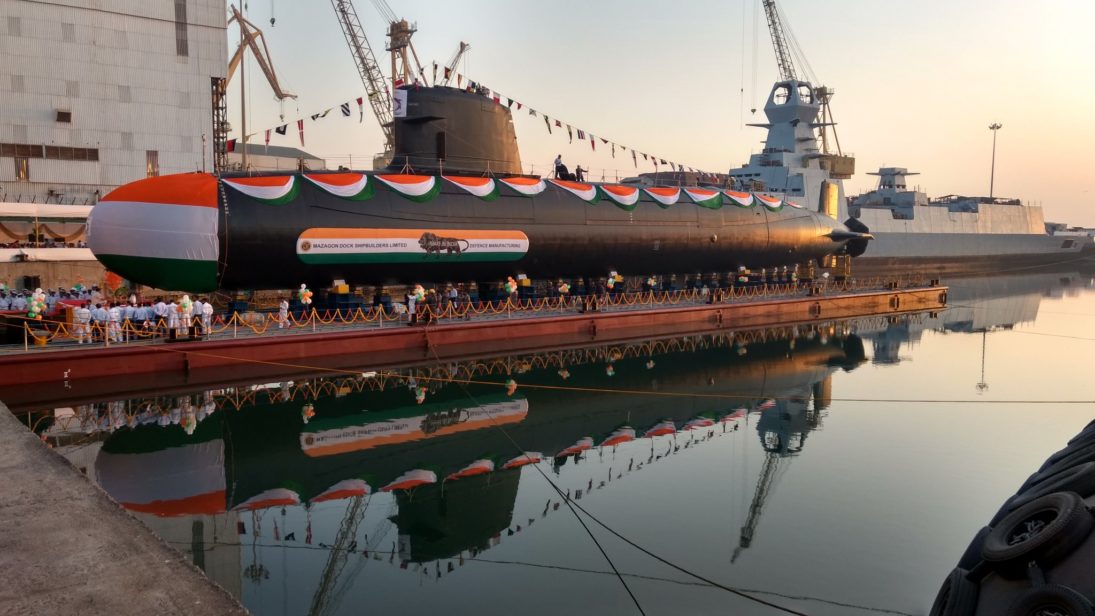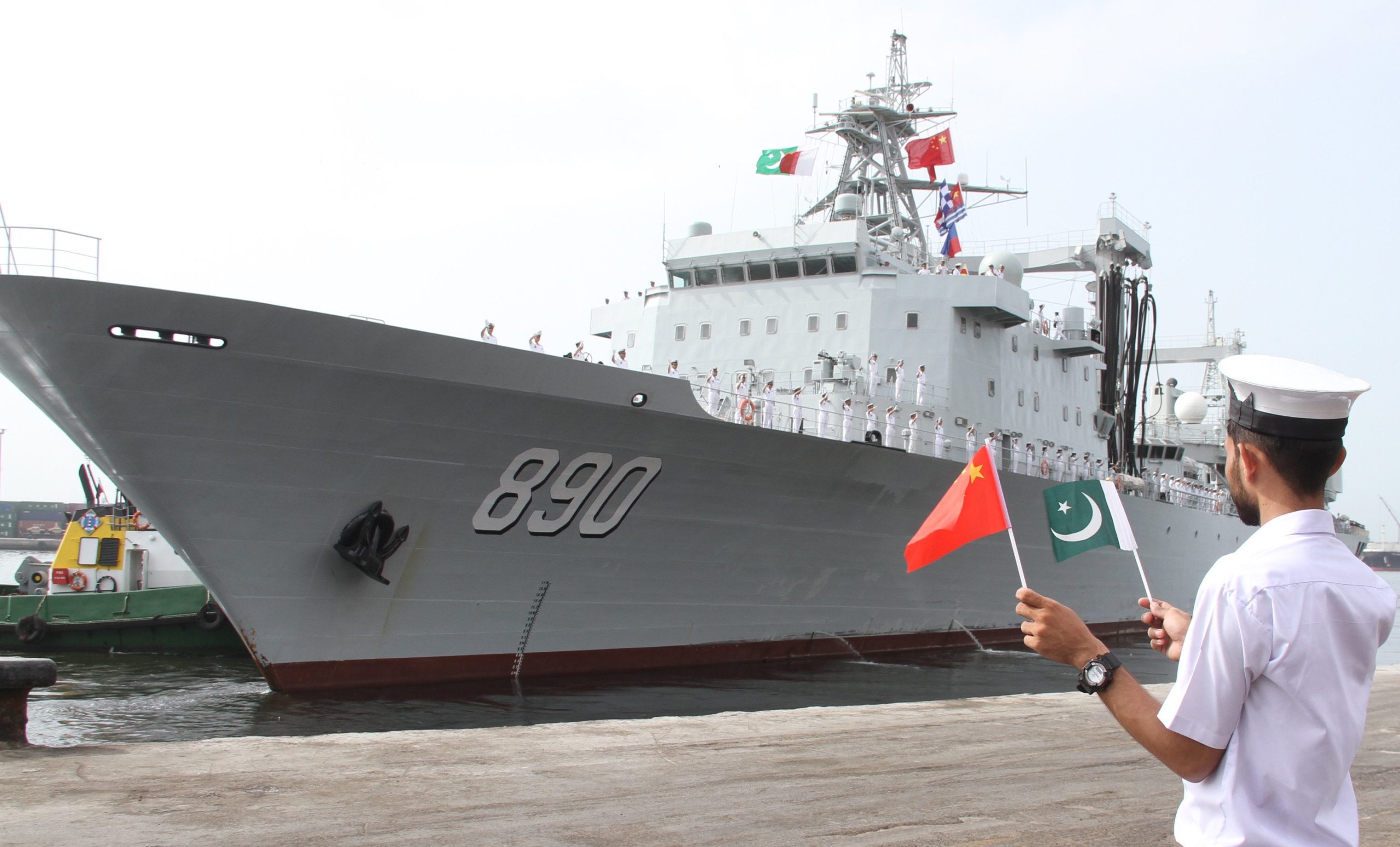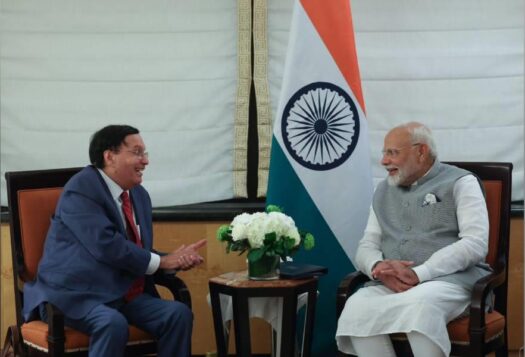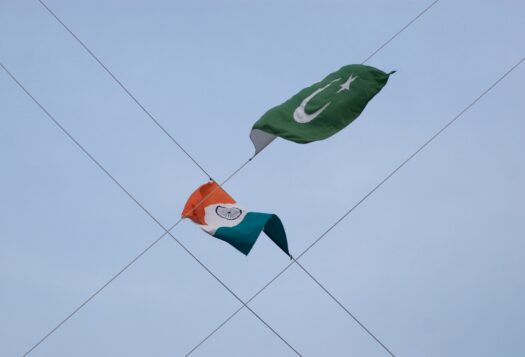
Submarine-based nuclear capabilities are considered the most survivable leg of a nuclear triad. While conventional submarines are constrained by their fuel requirements and limited underwater endurance, nuclear powered submarines have greater endurance and enhanced tactical and strategic capabilities. Both a nuclear-powered attack submarine (SSN) and a ballistic missile submarine (SSBN) are nuclear-powered, however only the latter can carry submarine launched ballistic missiles (SLBM) or submarine launched cruise missiles (SLCM). The importance of an SSBN lies in its ability to make a greater number of missiles available for a second strike.
The South Asian nuclear competition is characterized by the India-Pakistan rivalry on the one hand and the India-China rivalry on the other. This triangular relationship between China, Pakistan, and India is driving the South Asian nuclear arms race towards the sea. India’s concerned about its strategic balance versus China in the Indian Ocean Region (IOR), and Pakistan’s definition of stability emanates from maintaining full spectrum deterrence vis-à-vis India. Yet this increased focus on the utility of sea-based deterrence could easily exacerbate conventional maritime conflicts, turning them into crises with nuclear consequences.
India’s push for SSBNs
India’s 1999 Draft Nuclear Doctrine envisaged the ability to field a credible second-strike capability, providing the impetus for India’s quest to acquire a sea-based deterrent. India’s assured retaliation doctrine rested on its ability to convince its adversaries that its nuclear forces were survivable. Submarines thus became an important component of India’s no first use policy because they serve as guarantors of a second-strike.
Although India began working on its nuclear submarine program during the 1970s, the development of India’s Advanced Technology Vessel (ATV) submarine program began in 1984. The ATV program sought to develop quick, deep-diving, nuclear powered attack submarines. It would be an integral part of India’s nuclear triad, which was finally achieved in August 2016 when the Indian Naval Ship (INS) Arihant was commissioned, almost seven years after it was first launched. The INS Arihant can carry 12 K-15 Sagarika SLBMs, which have a range of 700 kilometers. Additionally, the Arihant-class submarines are able to remain under water for at least 50 days, thereby decreasing their chances of detection and increasing survivability.
In November 2017 India launched the second of four Arihant-class submarines, the INS Arighat, which is anticipated to be commissioned in 2020. The launch notably came just a few months after the Doklam standoff with China. Despite India wanting to carry out a precautionary deployment of its submarines during the crisis, the INS Arihant was absent from operations due to damage it had sustained before the crisis. This led the Indian Navy to begin outfitting the INS Arighat. In the aftermath of the crisis, a number of Indian strategic analysts concluded that the peaceful resolution of border disputes was becoming more elusive and that the India-China relationship would be less cooperative in future. In order to ensure the survivability of its deterrent vis-à-vis China, India began heavily investing in nuclear submarines.
In the aftermath of the crisis, a number of Indian strategic analysts concluded that the peaceful resolution of border disputes was becoming more elusive and that the India-China relationship would be less cooperative in future.
The next ships in the Arihant class, the S4 and S4* are expected to be launched in 2020 and 2022 respectively, but will need to undergo extensive live testing before they are commissioned and ready for operations. They will be larger and more powerful, reportedly being outfitted to carry eight long-range K-4 Shaurya SLBMs—twice the size of the INS Arihant’s missile load.
While the INS Arihant can carry 12 SLBMs with a range of 700 km, while the INS Arighat can carry 24 K-15 missiles. However, because of this missile’s inability to target Islamabad or serve as a survivable deterrent against China, India began testing the longer ranged K-4 in the early 2000s. Although still in development, the K-4 is said to have a range of 3,500 km. India most recently conducted successful tests of the K-4 in January 2020, however it has not been operationalized. In 2015, work began on the K-5 SLBM, with a reported range of 5,000 km, and there are reports that Defense Research and Development Organization (DRDO) is also developing the K-6 SLBM with a range of 8,000 km. The K-6 is expected to be armed on the next generation of SSBNs, the S-5 Class, which India plans to construct following the completion of S-4*. India has also secured funding for its plans to introduce six indigenously built Kalvari-class SSNs into its fleet.
India’s renewed attention to submarines and the haste to develop them is a consequence of the decline in the size of India’s existing submarine inventory. It can also be attributed to the frequent sighting of Chinese submarines in the IOR, including a SSN in 2017. China has maintained that the submarines were escorting Chinese anti-piracy patrols in the Gulf of Aden, however India has dismissed these claims, arguing that nuclear submarines are not required to tackle pirate skiffs. Although Chinese submarine movements in the IOR have reduced significantly since October 2017, India remains wary of growing Chinese influence in the region. For India, China’s “submarine diplomacy,” including a SSN docking in Sri Lanka in 2014 and supplying two diesel electric attack submarines to Bangladesh in 2017, is an obvious sign of China’s growing influence in the region. However, China’s increasing military relations with Pakistan are the foremost cause of concern for India—for instance, Beijing agreed to supply eight new diesel electric attack submarines to Pakistan by 2028.

Pakistan’s Response to India
Soon after the 1998 nuclear tests and as India’s quest for a sea-based deterrent became more obvious, Pakistan proposed a strategic restraint regime between India and Pakistan, which included a moratorium on testing any new nuclear weapons. Such a mechanism would have helped eliminate Indian naval nuclear capabilities and allayed Pakistan’s fears about Indian capabilities. However, as a strategic restraint regime failed to materialize and India made progress on a sea-based deterrent, Pakistan too began to work on pursuing a sea-based nuclear deterrent. In October 2000, Pakistan established the Maritime Technologies Complex (MTC) and formerly established the Naval Strategic Forces Command in 2012, which both seemingly preceded Pakistan’s actual naval nuclear capability. Up until 2015 there were indications that Pakistan was still trying to navigate the many requirements necessary to field a maritime nuclear force.
In 2016, Pakistan’s Senate considered a proposal for tabling a resolution at the United Nations General Assembly to declare the Indian Ocean a “nuclear free zone.” However, as it did not get the response Pakistan sought and with India-Pakistan tensions at an all-time high, Pakistan began developing the nuclear capable Babur III SLCM. First tested in January 2017 and with range of 450 km, the Babur III will likely be deployed on Pakistan’s French Agosta 90B-class submarines. The Babur III is a significant development given its ability to reach targets on the Indian mainland and adds survivability to Pakistan’s strategic nuclear forces. According to reports, Pakistan also commissioned a Very Low Frequency (VLF) array near Karachi two months before the Babur III tests, which would allow submarines to receive secure messages while submerged.
However, a future conflict between the two countries may well escalate to nuclear war which would not remain confined to the sea, since any attack against naval vessels would likely elicit an attack on land-based forces.
These developments suggest that Pakistan likely has the components necessary to deploy nuclear weapons aboard submarines. However, Pakistan may eventually seek a nuclear-powered submarine capability. After Prime Minister Narendra Modi’s announcement on November 2018 that the INS Arihant had successfully completed its first deterrence patrol, Pakistan warned against doubting Pakistan’s ability to meet the threat of India’s sea-based deterrent.
Impact on Stability
The success of sea-based deterrence depends on the assurance of an invulnerable second-strike capability. The development of SSBNs able to carry SLBMs and SLCMs has considerably increased the ability of countries to reach enemy targets at sea and on land. The ability of SSBNs to stay submerged for significant periods of time and the sound reduction from the nuclear power engine compared to a diesel engine, make them hard to detect especially in the vast expanses of the ocean. This knowledge greatly reduces the incentives for the enemy to strike first, and consequently strengthens deterrence.
Because of the assumption that naval warfare would take place at sea, far from population centers, sea-based nuclear weapons in South Asia have received less attention than their land-based counterparts. However, a future conflict between the two countries may well escalate to nuclear war which would not remain confined to the sea, since any attack against naval vessels would likely elicit an attack on land-based forces. This is compounded by the increased risk for miscalculation, escalation, and accidental use because the missiles on these submarines are dual-use weapons, are deployed ready-to-use, and with a potentially weakened command and control structure. The proliferation of nuclear submarines in the IOR will increase the probability of inadvertent or accidental nuclear escalation making them yet another source of instability in the already complicated India-Pakistan and India-China relationships.
***
Click here to read this article in Urdu.
Image 1: Indian Navy via Twitter
Image 2: Pakistan Navy via Twitter


